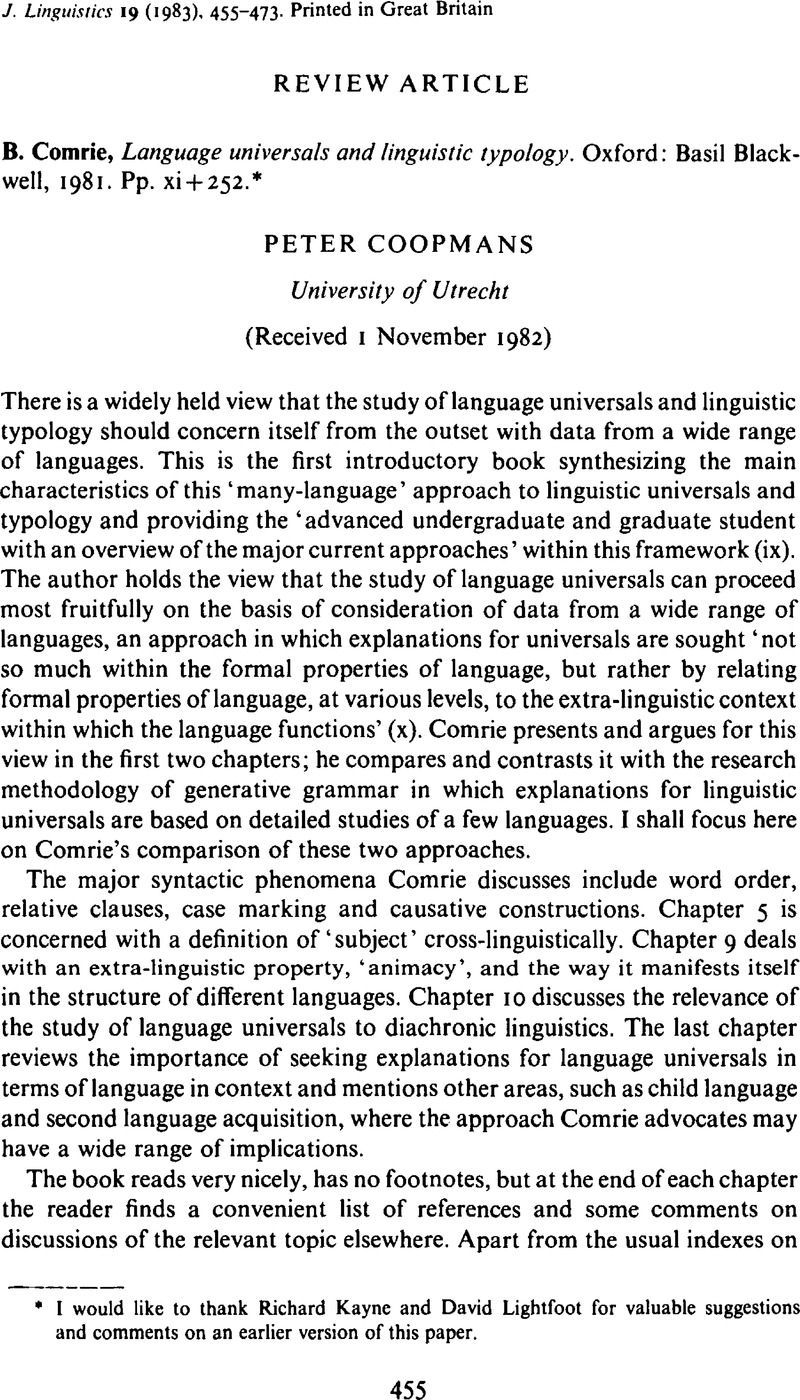Crossref Citations
This article has been cited by the following publications. This list is generated based on data provided by Crossref.
Comrie, Bernard
1984.
Language universals and linguistic argumentation: a reply to Coopmans.
Journal of Linguistics,
Vol. 20,
Issue. 1,
p.
155.
Aitchison, Jean
1988.
Linguistic Theory in Second Language Acquisition.
Vol. 8,
Issue. ,
p.
346.
Newmeyer, Frederick J.
1990.
Explaining language universals.
Journal of Linguistics,
Vol. 26,
Issue. 1,
p.
203.
Croft, William
2009.
Universals of Language Today.
Vol. 76,
Issue. ,
p.
145.
Haspelmath, Martin
2021.
How to tear down the walls that separate linguists: continuing the quest for clarity about general linguistics.
Theoretical Linguistics,
Vol. 47,
Issue. 1-2,
p.
137.



